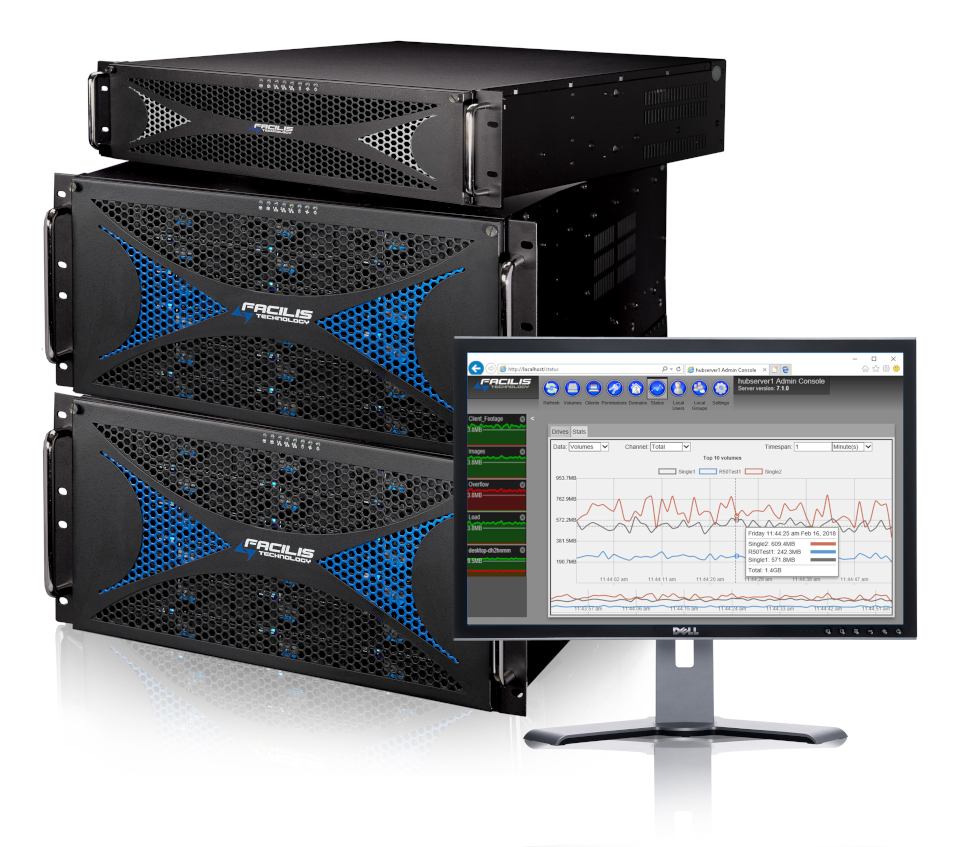Facilis to Debut New Workflow Management Capabilities at 2018 IBC
HUDSON, Mass. — Facilis will debut the latest upgrades to its high-performance shared storage solutions for collaborative media production networks at the 2018 IBC Show at the RAI (Stand 7.C14), in Amsterdam Sept. 14–18. To enable more efficient use of its TerraBlock shared storage and Hub Server systems, Facilis will showcase v7.1 of its Shared File System, FastTracker v2.5, and a preview of features still in development.

Building on v7.0, which introduced a web console interface and some shared file system enhancements, v7.1 adds workflow management features including:
- Real-time and historical bandwidth monitoring of volumes and workstations;
- RAID50 and RAID51 management through an admin console;
- Preferred connection address for multipath networks;
- Automatic load balancing of clients across server IPs;
- Remote client deployment to facilitate upgrades in multiclient facilities.
With FastTracker v2.5, Facilis claims users can get better organized with custom ingest-to-archive workflows to LTFS and disk-based backup. Previews of local storage assets, as well as LTFS and network-based assets, can be generated and stored in a way that makes them easier to find. And catalogs can be created for the separation and security of indexed data and accessed through a new Adobe Premiere Pro and After Effects panel.
[Read: Evolution Of Storage Solutions: What Matters Now In Media Management]
“Even the average facility has hundreds of thousands of video and audio files that are often very difficult to locate,” said James McKenna, VP of marketing at Facilis Technology. “By … indexing and cataloguing data with FastTracker, our customers have increased efficiency, and … full access to the facility library.”
With speeds over 4 Gbps from a single virtual project-based volume, the new Facilis Hub Server — which optimizes drive groups and increases bandwidth from TerraBlock storage — gives new customers a way to scale bandwidth through dynamic aggregation, while letting existing customers extend the usable lifespans of older systems.
The professional video industry's #1 source for news, trends and product and tech information. Sign up below.

